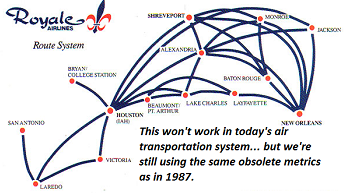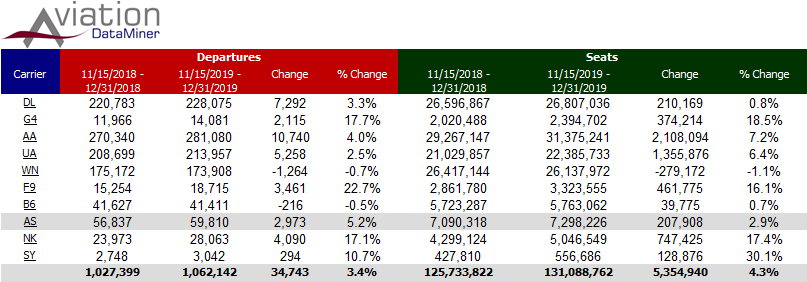General Aviation Electric Aircraft…
A Coming Shock For Small Airports
The Boyd Group International Aviation Forecast Summit, now in its 25th year, has earned the reputation of being the #1 forum for illuminating new and disruptive trends in the industry.
In 2003, it was the first to predict that the fleet gap that drove huge demand for 50-seat “regional jets” was essentially filled, and the future orders would be heading south. The IAFS™ was also the forum where manufacturers such as Embraer announced new upgrades to their E-175/195 program.
The Summit was also the place were new concepts such as the Boom supersonic airliner, and over the horizon hypersonic air travel were showcased.
At the 2019 International Aviation Forecast Summit, another technology that is well known and well underway was reviewed.
Electric-propulsion.
Bye Aerospace of Denver delivered a compelling presentation on their line of 2-place and 4-place airplanes. The range is a few hours – which is sufficient for a lot of GA applications, particularly pilot training, which can be done at a fraction – a small fraction – of the hourly cost of existing (and aging) aircraft. Re-charging is about 20 minutes – reasonably competitive with taxiing up to the self-serve 100LL facility.
Say what? This is no big news. Electric aircraft are already flying. In regard to small general aviation aircraft, it’s actually old hat.
It certainly is. But what’s not recognized, and is “new” is that the entire structure of general aviation airports will need to change in the next ten years. Those that don’t will be out of business.
Small Is The Immediate Future. While the energy-storage technology curve gets into Moon-launch configuration as the size of aircraft increases, and we are (at this moment, at least) years away from a large electric airliner, the current technology at the entry end of the aviation system is proven.
This has given rise to lots of enthusiasm and giggling and near-euphoria in parts of society. Wow! they chortle, this is the beginning of the end of that nasty, carbon-generating internal combustion engine!
We all know, right, that electric aviation propulsion is clean, environmentally-friendly, and as it expands, polar bears can grow more confident that their habitat will be safe and secure.
Really? Has this actually and dispassionately been thought through? All aspects?
The Advantages Are Clear. The Immediate Ones, At Least. One thing is absolutely certain. The fundamentals of electric propulsion at the lowest end of aviation absolutely represent an economic – and, yes, an environmental – breakthrough.
But it will toss the entire underpinning of general aviation on its ear. Expensively. This will be felt at small GA airports in particular, where operations as we know them, will be based on entirely new economic and operational foundations.
Concurrently, it is this sector of the airport industry that has the least ability to absorb costly changes in facilities and support systems. In effect, the evolution of significant parts of general aviation into electric propulsion could spell a lot of trouble for airports at the very bottom of the system.
Let’s take a 10,000’ overview – assuming that electric propulsion will take over in, say, ten years.
Obsoleting Entire Supply & Support Chains. Think about it. That electric powerplant is entirely different from internal combustion engines. That means that support mechanisms need to completely change. None of these changes are difficult, but they will be costly to implement.
Electric Fuel – It Will Drip Zero, But Generate Zero Into-Plane Fees. This part seems obvious, but overlooked. As more electric light aircraft come into operation, the demand for traditional fuels – 100LL and jet-A – will decline. At large airports, this will be minor, as GA is a small part of the operations.
But what about small all-GA airports? At facilities where the majority of operations are with small singles and twins, that dependence on into-plane fees as a main revenue stream will get threatened, big-time, as the mix of electric aircraft increases.
Then there is the issue of assuring adequate re-charging facilities for both based and transient aircraft.
Who Will Control Electric “Fuel” Distribution? Oh, and should there be prohibitions on owners charging their aircraft privately at their tie-downs or in their hangars? Maybe the airport will need to require that all “refueling” be done at charge stations provided by the airport, to assure that there is some revenue stream to replace that lost with traditional into-plane fees.
Who’s Going To Fix & Maintain These New Flying Machines? Airport-based support needs will change. Today the traditional A&P mechanic addresses propulsion units entirely different than electric motors. Where is the training for this function? What are the future requirements for qualification of technicians to repair and inspect these electric systems? Standards?
Emergencies… A Battery Burns Differently From Jet-A. The CFR systems at small airports are based mostly on the need to address and remediate accidents involving airliners powered with petro-fuels.
What are the new challenges involved with battery-powered aircraft? These machines will have a lot of different chemicals and chemical reactions to deal with in case of an accident. What additional training and equipment will be needed? FAA: do you have any plans for funding these needs?
Environmental – Near Term & Locally, Great. But Long-Term? There is no doubt that there are differences in emissions directly from an electric 2-seater and one powered by an internal combustion engine. Like, essentially none in the case of the electric motor.
Then there are a lot of positive corollary impact variances attendant to electric propulsion. There are no fuel spills to clean up. No storage tanks. No hoses. No fuel tank, per se, on the airplane itself. All of these represent precautions and maintenance attention that are not needed at a charging station.
Ok, great. But long-term… going out 20 years… are there other environmental issues that need to be considered?
Such as, what is the impact of making the storage units (batteries) for electric vehicles? Maybe not a lot, and maybe a whole lot – it’s an open question whether independent and dispassionate studies have been done.
What about the environmental impact of re-cycling vehicle battery systems? They do wear out, right? And where do they go to get processed? What is the cost – financially and environmentally? Does the technology even fully exist to handle the future volume?
Bottom Line: Electric Isn’t Coming. It’s Here. The immediate benefits – on paper – of electric propulsion are not in question.
But for the aviation sector that will be most affected in the early stages of this transformation – general aviation airports – the entire financial, operational, economic and regulatory foundations will need to be modified.
That will take money. More critically, it will take solid, futurist planning.
Both should be a right-now priority for the airport industry…
… Lest they get shocked by the changes driven by electric propulsion.
________________________________________________
Finally…
Thanks For The Feedback On The “Coupe de Ville”
We want to thank the folks who took the time to comment on last week’s review of what we define as “Cracker Jacks” air service development schemes, where small communities are sold a bill of goods, promising things that simply are out of reality. If you missed it, click here.
It seems a lot of people see through the game of promising what feels good, but can’t be delivered.
_____________________________________
BEST WISHES FOR A GREAT WEEK AHEAD FROM THE TEAM AT BOYD GROUP INTERNATIONAL!
 An exciting venue… not only is Cincinnati Northern Kentucky International easy and cost-effective to access, but we’ve chosen the beautiful Hyatt Regency Cincinnati as the venue for the 25th annual IAFS.
An exciting venue… not only is Cincinnati Northern Kentucky International easy and cost-effective to access, but we’ve chosen the beautiful Hyatt Regency Cincinnati as the venue for the 25th annual IAFS.



